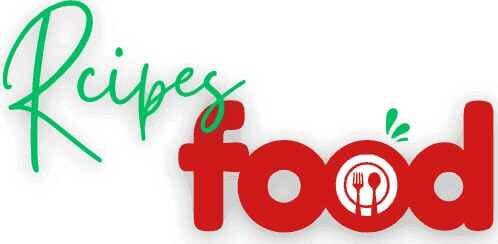French Toast with Orange is not just a breakfast dish; it’s a delightful experience that brings family and friends together. This fluffy delight provides warmth and comfort every time you take a bite. With its sweet and citrusy flavor profile, it’s a dish you’ll fall in love with, often returning to make it for weekend brunches or special occasions. In this article, we’ll delve into why this recipe is a must-try, explore its essential ingredients, and guide you through every step to ensure your French Toast turns out perfectly.

Why You’ll Love French Toast with Orange
Perfect for Families
One of the best features of French Toast with Orange is its family-friendly nature. This recipe is not just quick and straightforward; it’s a dish everyone, from toddlers to grandparents, can enjoy. The delightful combination of flavors offers a fun and engaging way to start the day, especially when the cook gets kids involved in the kitchen.
Nutritional Benefits
French Toast with Orange incorporates simple, wholesome ingredients that come with various nutritional benefits. Eggs provide protein, while whole milk offers calcium and essential vitamins. The addition of orange juice enhances your meal with vitamin C, giving you a refreshing boost to kickstart your day.
Flexibility and Adaptability
This recipe is wonderfully flexible. It’s easy to adapt it for picky eaters, switching the bread type or adding flavors to suit your family’s taste. Plus, it’s budget-friendly, making it perfect for everyday use or special weekend celebrations.
Essential Ingredients for the Recipe
Ingredients
- 4 large eggs
- 1 cup whole milk
- 1/2 cup fresh orange juice
- Zest of 1 orange
- 1 teaspoon ground cardamom
- 1 teaspoon vanilla extract
- 1/4 teaspoon salt
- 8 slices thick bread (e.g., brioche or challah)
- 2 tablespoons unsalted butter for frying
- Maple syrup for serving
- Fresh orange segments for garnish (optional)
- Powdered sugar for dusting (optional)
Eggs
Eggs are vital for binding the bread and providing structure to your French toast. If you’re looking for alternatives, you can use flaxseed meal or chia seeds mixed with water as a vegan substitute.
Whole Milk
Whole milk lends creaminess to the batter. You may also utilize alternatives such as almond, oat, or coconut milk for a dairy-free option without compromising flavor.
Thick Bread
Using thick bread, like brioche or challah, ensures a moist and hearty toast. If you have dietary restrictions, whole grain or gluten-free bread varieties can work equally well, allowing everyone to enjoy this dish!
Ingredient Preparation
Step 1 – Mix the Batter
In a large mixing bowl, whisk together the eggs, whole milk, fresh orange juice, orange zest, ground cardamom, vanilla extract, and salt until everything is well blended and smooth.
Step 2 – Soak the Bread
Dip each slice of bread into the batter, soaking for about 30 seconds on each side. Be careful not to oversaturate; you want the bread to absorb just the right amount for perfect cooking.
Step 3 – Prep Your Cooking Space
Ensure you have a non-stick skillet or griddle ready to go on medium heat. This will help achieve a beautifully golden-brown French toast without sticking.
Step-by-Step Cooking Instructions
Step 1 – Heating the Pan
Preheat your skillet or griddle and melt 1 tablespoon of unsalted butter until it begins to bubble.
Step 2 – Cook the Bread
Carefully place the soaked bread slices onto the skillet, cooking them for 3-4 minutes on each side. You want them to turn a gorgeous golden-brown and feel firm to the touch.
Step 3 – Finishing Touches
Once cooked, remove the French toast from the skillet and keep warm on a plate. If you prefer, add a bit more butter in the pan to cook the remaining slices.
Tips for an Even Tastier Version
Adding Extra Ingredients
Feel free to sneak in flavors like cinnamon or nutmeg for an extra kick. You could also add fruit like banana slices or strawberries for added sweetness.
Techniques to Enhance Flavor
Consider marinating the bread slices overnight in the batter for intense flavor absorption. Toppings like whipped cream, fresh fruits, or nuts can elevate the presentation and taste of your dish.
Adjustments for Preferences
If you have specific dietary needs or preferences, you can substitute dairy-free options for milk and eggs and opt for gluten-free bread to create your perfect version of this dish.
Recipe Variations and Adaptations
Vegetarian Option
While the original recipe is vegetarian-friendly, make sure to consider the types of bread used. Many artisan breads are perfect for French toast and come in various flavors, enhancing your dish further.
Gluten-Free or Low-Carb Option
For those needing gluten-free options, look for gluten-free bread varieties available in grocery stores, often made from almond or coconut flour for a different flavor profile.
Other Adaptations
Consider adjusting the flavor based on the season—add pumpkin spice in the fall or berries in the summer. Experimenting with flavors will ensure this recipe never grows old!

Serving Suggestions
Salad or Soup Ideas
Serve your French Toast with a light salad or a refreshing fruit soup on the side for a balanced meal. This combination adds brightness and variety to your brunch table!
Hearty Sides
Accompanying the French Toast with roasted vegetables or a hearty homemade bread can enhance your meal, providing diversity in textures and flavors.
Drink Recommendations
Pair it with freshly brewed coffee, or consider mimosas for a festive brunch. Smoothies or herbal teas also work well for a lighter morning option.
Storage and Reheating Tips
How to Store Leftovers
Place any leftover French toast slices in an airtight container and store them in the fridge for up to three days. For longer storage, consider freezing the slices, wrapped tightly to avoid freezer burn.
Reheating Techniques
The best way to reheat your French toast is in an oven—simply pop it in at 350°F (175°C) for about 10 minutes, or until warmed through. Alternatively, the microwave works, but may result in a less crispy texture.
Portioning Tips
For meal prepping, consider portion-sizing your French toast so that reheating is efficient, perhaps even freezing in pairs and separating with parchment paper.
Nutritional Information and Benefits
Nutritional Values per Serving
Each serving of French Toast with Orange offers approximately 300 calories, composed of about 10g of protein, 15g of fat, and 40g of carbohydrates. It’s a balanced meal of energy that will keep you satisfied through the morning.
Ingredient Benefits
Eggs and milk provide vital protein and calcium, while the orange juice contributes an antioxidant-rich burst of flavor that helps in boosting your immune system.
Recommended Portions
Serving one slice for children and two for adults can help gauge portions appropriately, ensuring satisfaction without excess.
Common Mistakes to Avoid
Issue 1 – Bread Too Soggy
Ensure you didn’t soak the bread too long; a short dip is key to achieving the right texture.
Issue 2 – Overcooked French Toast
Keep an eye on cooking times! If your heat is too high, the outside can burn while the inside remains soft.
Issue 3 – Forgetting Seasonings
Don’t skip those spices! A pinch of nutmeg or cinnamon can make all the difference in transforming your French toast from good to fantastic.
Inspiring Conclusion
French Toast with Orange is not just a breakfast option; it’s a delightful way to connect with loved ones in the kitchen. It allows you to enjoy quality family time while creating something delicious together. This dish is perfect for any occasion, turning a simple meal into a festive gathering. So roll up your sleeves and start experimenting—don’t forget to share your creations and experiences with others!
FAQ (Frequently Asked Questions)
- Can I prepare this recipe in advance?
Yes! You can prepare the batter and soak the bread the night before and simply cook it in the morning for a quick breakfast. - What are the best substitutes for eggs?
Flaxseed meal mixed with water or unsweetened applesauce are great alternatives for binding. - How do I make this dish healthier?
Consider using whole grain bread, reducing added sugars, or even substituting Greek yogurt for some of the milk. - Can I use frozen bread?
Absolutely! Just ensure to thaw it before soaking in the batter. - What kind of bread works best?
Thick slices of brioche, challah, or whole-wheat bread work beautifully. - Is this recipe kid-friendly?
Yes! The orange flavor is appealing to kids, and making it together can be a fun bonding activity. - How can I enhance the orange flavor?
Use more orange zest or consider adding a splash of orange liqueur if making for adults. - Can I double the recipe?
Certainly! Just make sure to use a larger skillet or cook in batches. - What toppings go best with it?
Maple syrup, powdered sugar, fresh fruits, or whipped cream are all delicious options. - How can I store leftovers properly?
Use airtight containers in the fridge for up to three days or freeze for later enjoyment.
Now that you’re equipped with all the knowledge about making a scrumptious French Toast with Orange, it’s time to get in the kitchen and create this delightful meal! Enjoy!

French Toast with Orange
Ingredients
- 4 large eggs
- 1 cup whole milk
- 1/2 cup fresh orange juice
- Zest of 1 orange
- 1 teaspoon ground cardamom
- 1 teaspoon vanilla extract
- 1/4 teaspoon salt
- 8 slices thick bread (e.g., brioche or challah)
- 2 tablespoons unsalted butter for frying
- Maple syrup for serving
- Fresh orange segments for garnish (optional)
- Powdered sugar for dusting (optional)
Instructions
- 1.Make Custard: Whisk eggs, milk, 2 tbsp zest, vanilla, and cinnamon.2.Soak Bread: Dip slices 30 seconds per side.3.Cook: Melt butter in skillet over medium. Cook toast 3-4 minutes per side until golden.4.Make Syrup: Simmer juice, honey, and 1 tsp zest 5 minutes. Thicken with cornstarch slurry if desired.5.Serve: Drizzle with syrup, dust with powdered sugar, garnish with orange slices.
Notes
- Stale bread absorbs custard better
- Add 1 tbsp Grand Marnier to syrup for adult version
- Keep cooked toast warm in 200°F oven

